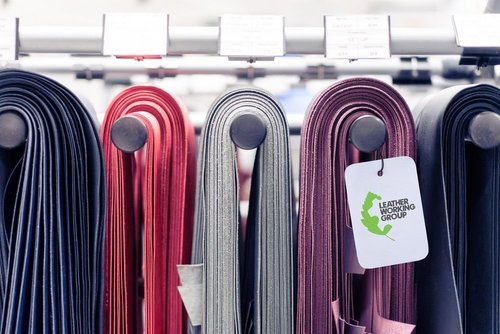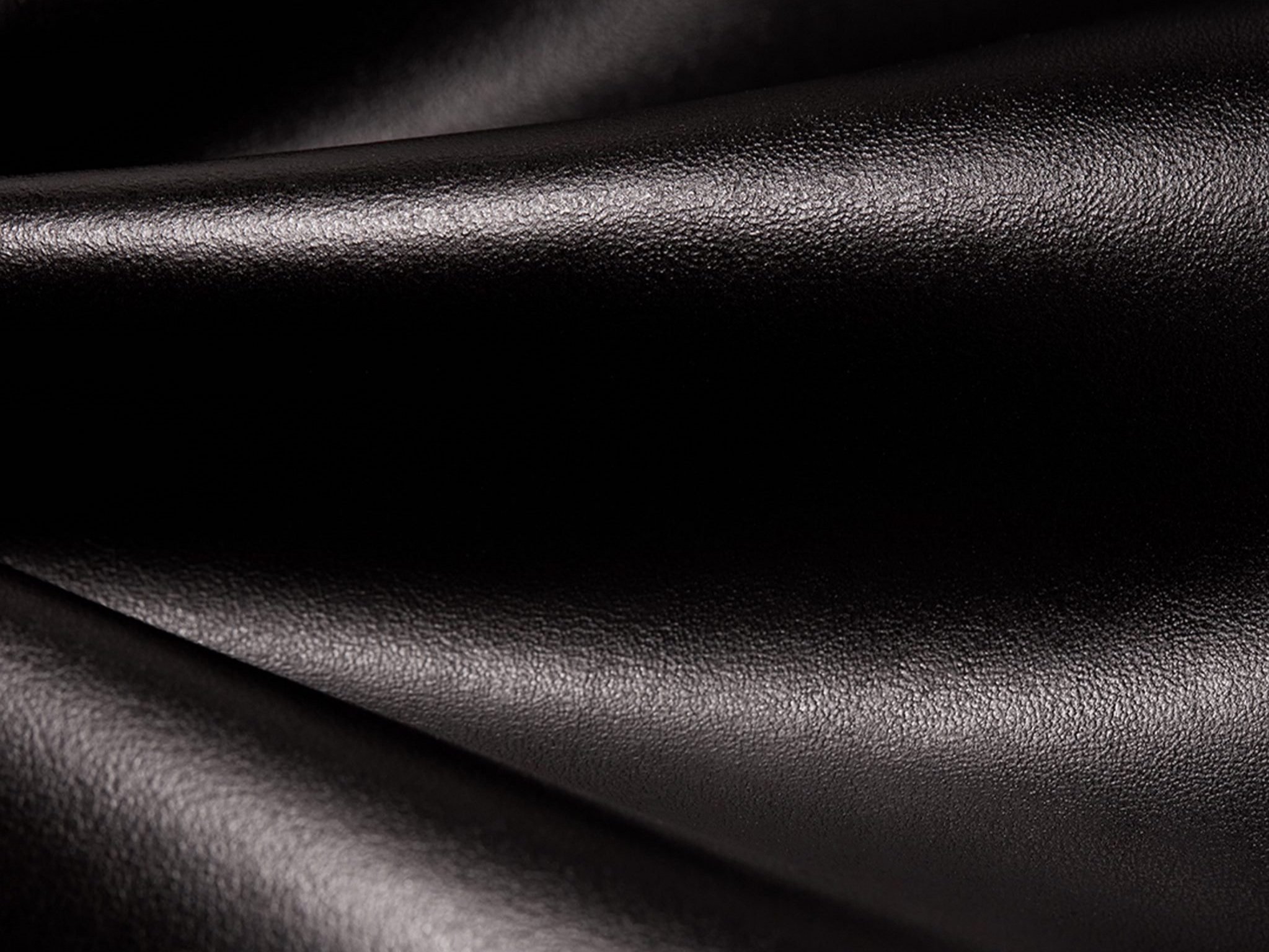Alternatives to leather from animal skins
Leather derived from the skins of both farmed and wild animals are no longer necessary in fashion. Choosing to move beyond leather means opting out of needless violence and destruction.
While even conventional synthetic leather is far less environmentally impactful than cow skin, we must move beyond virgin fossil fuel and animal-derived materials alike to protect the planet and all those on it. Some of these materials are imperfect, but they are stepping stones to further innovation, while being some of the best options currently available.
If you're looking for material innovation still in development, explore our page on leather alternative innovation at CIRCUMFAUNA.
Shiringa bio-leather
This material is made from the latex sap of shiringa trees, which grow wild in the Amazon and are harvested regeneratively by Indigenous communities.
This water resistant next-gen leather supports protection of the Amazon against deforestation, while uplifting Indigenous communities and culture.
The material can be made plastic-free or with a bio-curative and some synthetic inputs for increased durability. Work to remove all synthetics is ongoing.
Uncaged
From Uncaged Innovation, this material harnesses the power of grain proteins to make a next-gen leather with a similar structure to the collagen in skins.
Uncaged Innovation is able to produce a 99% bio-based material that is flexible, strong and quickly scaling.
The material can be embossed and used much like any animal-derived leather.
Celium
Made from fruits destined for landfill that are consumed by controlled bacteria, this bacterial cellulose material is tanned like traditional animal-derived leather, but with greener chemistry. As a result, the final material has the same look and feel as animal-derived leather.
This material has a far reduced climate and other environmental impacts according to its lifecycle assessment studies, and is made by PolyBion.
Mirum
This material is completely plastic-free, made from natural inputs. It is certified as 100% bio-content through the USDA bio-preferred program.
While different Mirum materials vary based on the application and use they are designed for, black Mirum used for handbags, for example, is made of a blend of FSC certified natural rubber, natural colourants like charcoal, natural fillers like clays, plant-based oils and waxes.
Recycled PU ‘leather’
The most common alternative to cow skin leather today is polyurethane (PU) leather. While conventional PU leather has a far reduced impact compared to animal-derived materials, it is not the solution for truly sustainable fashion, as it is requires fossil fuel extraction
However, this material can be made from recycled sources, which assists with reducing waste and making use of already available resources.
Cork
Cork trees are harvested of their bark without the tree being cut down. This helps the trees sequester more carbon.
Thinly cut slices of cork are placed together on a fabric backing, such as cotton, and heat is applied to set the sheets together. This is a totally biodegradable material.
The cork can be embossed to mimic reptilian patterns.
Mycelium ‘leather’
A material currently being scaled for the wider industry, this leather alternative is bio-based and produced from mycelium - the branching, root-like vegetation part of fungi.
The mycelium is grown in vertical, indoor farms in a matter of days, as opposed to years in the case of cattle. It’s efficient and far more sustainable. Sqim and Fine Mycelium are two such materials from different innovators.
Mango waste 'leather'
45% of all fruits and vegetables grown globally are discarded between the field and the plate. Now, unsold mangoes are turned into leather.
Combined with additives from bio-oils, the mango mixture is put onto a backing material. Some backing is natural, some is polyester - natural is preferred. The final result is a partly synthetic, partly bio-based material.
The material can be embossed to mimic reptile textures.
Pineapple leaf ‘leather'
Pineapple fruit farms generally discard the leaves of the fruit plant, but this material makes use of their fibres, offering additional income to farming communities.
The pineapple leaf fibres are coated with a water-based PU resin that is REACH compliant. The material is called Piñatex, and is partly biodegradable in controlled conditions.
Treekind
This plant-based leather alternative can be home composted under the right conditions (fully submerged in water, or in water and soil over time), while remaining sturdy and strong for use.
Completely free from plastic and recyclable, Treekind is estimated to use less than 1% of the water cow skin leather production does. It is made from wood that is sourced sustainably – from wasted Christmas trees to fallen wood and leaves.
Cactus leather
This material is made largely of cacti grown in Mexico, where its makers support natural biodiversity. No trees have been cut down for the plantation, which relies on rain rather than irrigation.
The material is made up of dried cactus powder, backed on woven material, including recycled material options, and coated with polyurethane to make a lower impact yet durable leather alternative.
Grape or wine 'leather'
In wine production, grape skins, stalks and seeds are discarded. These are dried out and pulverised into a powder that is combined with non-toxic chemicals and oils to produce leather.
Rather than petroleum oil, bio-oil is taken from grape seeds for this process. While there are already PU leathers made from bio-oil, this step takes sustainability farther.
Apple ‘leather’
Becoming more and more commonplace today, apple-based leather is made from the seeds, skins and cores of apples that are otherwise discarded by apple juice producers.
This discarded organic matter is dried and crushed into a fine powder, which is then blended with polyurethane to create a 50% apple material.
Want to keep learning?
-

Is vegetable tanned leather sustainable?
Vegetable tanned leather is positioned as more eco-friendly than chrome tanned and synthetic leather. But is it true?
-

What is the Leather Working Group certification?
Brands using LWG certified leather claim to offer more sustainable leather goods. But is it really better for the planet?
-

Under their skin: leather report series
Learn about leather’s impact on people, our fellow animals and the planet in our in-depth reports, featuring recommended actions.














